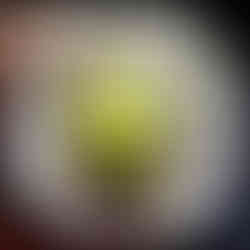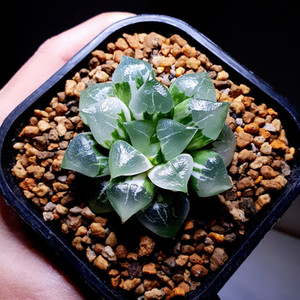Variegated Haworthias, What’s Worth Your Money and What to Avoid
- Chill Chilly
- Sep 27
- 4 min read
Let’s Talk About Variegation in Haworthia
Variegation is one of the most exciting aspects of collecting Haworthias. However, not all variegation is created equal, and understanding the different patterns can help you make better choices as a collector or hobbyist. In this guide, we’ll break down what makes certain variegated Haworthias more expensive than others, what to look for, and what to avoid.
1. Understanding Variegation
Variegation refers to the presence of different colors on a plant’s leaves, often in the form of creamy yellows, or pinkish-red hues alongside the natural green. This occurs due to changes in chlorophyll distribution. The green areas contain chlorophyll and can photosynthesize, while the lighter-colored areas cannot.
2. The Fully Variegated Trap
One of the riskiest forms is the fully variegated Haworthia. While it can sometimes be sold cheaply, some sellers may try to market it at a premium price to unsuspecting beginners.
(Reference picture below)
While it may look dazzling with its pale leaves and striking contrasts, this form often lacks enough chlorophyll to sustain itself. Without sufficient green tissue, the plant can’t produce enough food and will slowly weaken, often dying in the later stages of growth.
New hobbyists are especially drawn to these because:
They look uniquely beautiful and eye catching.
Sellers often price them very low to clear stock quickly.
However, this “bargain” can turn into disappointment when the plant fails to thrive. Unless you’re ready to accept the short lifespan, it’s better to avoid fully variegated plants.
3. More Desirable Patterns
Not all variegation is risky. In fact, the most valuable and collectible Haworthias are often those with a balanced variegation pattern — enough green tissue to sustain the plant, but with unique streaks or marbling that make it stand out.
Balanced variegation This is when the plant displays a good mix of green and variegated areas. The green parts carry enough chlorophyll to keep the plant healthy, while the lighter sections provide the visual appeal. Over time, these plants can grow and offset normally, giving you more beautiful plants without sacrificing their health.
(Please refer to the pictures below for reference)
Unique Patterned Variegation – This includes marbling, symmetrical streaks, or a bold center-line stripe. Some specimens even display evenly Distributed Variegation with full Reversed Variegation, creating a strikingly balanced yet dramatic look. Each plant is essentially one of a kind, and these patterns are also highly collectible due to their distinct and unique appearance.
Reversed variegation Among all variegation types, this is often considered the most prized and expensive. In full reversed variegation, the green appears where variegation usually is, and the variegated color dominates the rest of the leaf in a stable, consistent pattern. Because it’s rare, visually dramatic, and can still sustain healthy growth (thanks to well-placed green tissue), collectors are willing to pay a premium for high-quality specimens.
In the collectors market, Haworthias with rare or well-balanced patterns, especially stable full reversed variegation often command significantly higher prices because they combine visual appeal with long-term survivability.
What is Reversed Variegation or 'RV'? And what are the different types of RV and why does it matters.
This phenomenon is known as reversed variegation. In this form, chlorophyll develops within the internal tissues of the leaf rather than being distributed across the surface layers. As the epidermal layer overlays the green pigmentation, the chlorophyll is partially obscured, producing a subdued, diffused appearance. This results in a 'smudged' or 'fading' green coloration when viewed externally.
4. What to Avoid during purchases for Variegated Haworthias
Just as there are desirable traits, there are also patterns that should make you think twice before buying — especially if you want your plant to thrive in the long run.
Fully variegated plants
As mentioned earlier, these may look beautiful but often lack the green tissue needed to survive. Even with the best care, their lifespan is usually short, and they can quickly become an expensive regret.
Unstable variegation
Some Haworthias may start off with an appealing pattern but lose it as they grow, either reverting to plain green or developing more variegation than the plant can sustain. Unstable plants can be frustrating because they’re unpredictable and often disappointing after a season or two.
That said, if the price is reasonable, it can still be worth taking the chance, with the hope that the variegation develops in a favorable way over time.
Artificially spray painted plants are usually easy to spot and, unfortunately, are fairly common among less reputable sellers. Chemically treated plants, however, can be much trickier for beginners to identify, as their effects are designed to imitate natural variegation.
A helpful rule of thumb, if the price seems too good to be true, or the plant shows unusually odd or unnatural variegation, take it as a red flag. Always do some extra research on both the seller and the plant before making a purchase.
Final Thought
With variegated Haworthias, beauty and balance go hand in hand. A rare pattern with strong, healthy variegation may cost more, but it’s well worth it as the plant will grow stronger and stay healthier in the long run.
On the other hand, spending money on highly or fully variegated plants with little to no chlorophyll often leads to slow growth or even death leaving you disappointed and out of pocket. Choose plants that can truly thrive, and both your collection and your wallet will thank you.
And if you’re ever unsure, feel free to check with me for advice choosing a good variegated Haworthia can sometimes get really confusing.






































